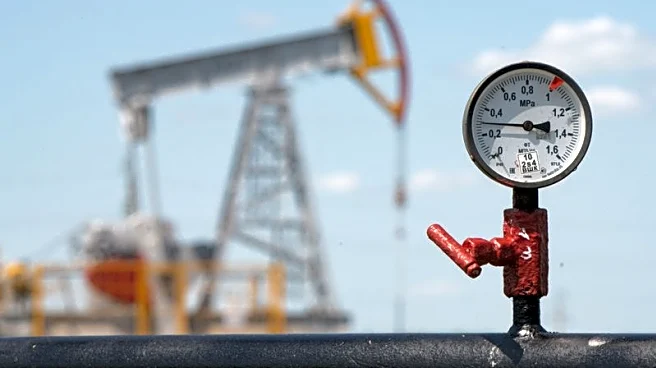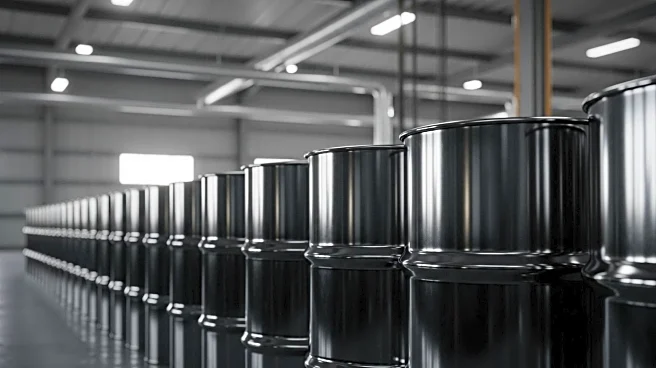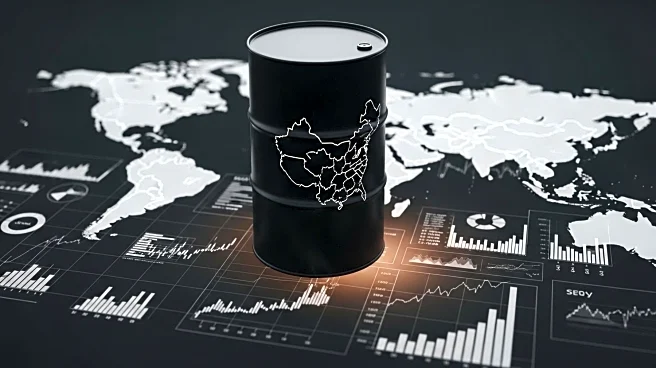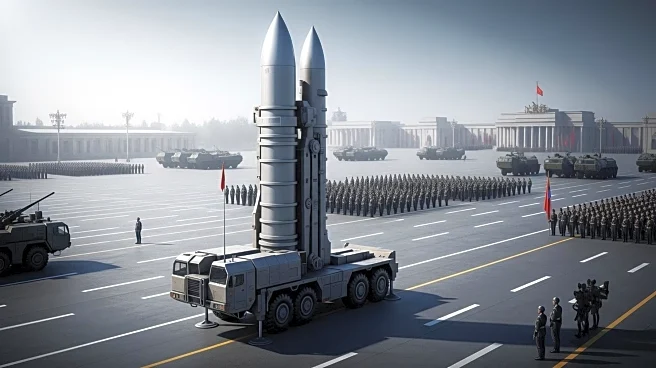What's Happening?
The global oil market is experiencing a potential oversupply situation, driven by increased production from countries like the United States, Guyana, Brazil, and Argentina, alongside OPEC's lifted production restrictions.
Despite geopolitical stability and seasonal consumption peaks, the market is trending towards a surplus, with the EIA and IEA reporting a surplus of over 2 million barrels a day, contrasting OPEC's deficit assumption. China's strategic stockpiling of oil, averaging 900,000 barrels a day, further complicates demand calculations, suggesting that real demand may be lower than reported. This stockpiling is believed to be politically motivated, potentially preparing for prolonged geopolitical tensions or capitalizing on discounted oil from countries like Iran and Russia.
Why It's Important?
The potential oil glut could lead to lower prices, impacting investment in oil production and possibly triggering an energy crisis if production falls sharply. The situation underscores the need for countries to reduce dependency on fossil fuels and invest in renewable energy sources. The dynamics of oil demand and supply are crucial for global economic stability, affecting energy security and pricing. The U.S. shale industry, facing higher production costs, may struggle to maintain output if prices remain low, influencing domestic energy policy and economic conditions.
What's Next?
If the oil glut materializes, prices may continue to fall, discouraging investment in new oil exploration and production. This could lead to a future supply crunch, raising prices and creating energy insecurity. Countries may need to accelerate their transition to renewable energy to mitigate potential impacts. The geopolitical landscape, particularly China's stockpiling strategy, will play a significant role in shaping future oil demand and market stability.
Beyond the Headlines
The oil market's opacity and complexity make it challenging to predict future trends accurately. The depletion rates of non-conventional oilfields and the high costs associated with maintaining production highlight the industry's vulnerabilities. The shift towards renewable energy and electric vehicles is gradually reducing oil demand, potentially leading to long-term changes in global energy consumption patterns.












